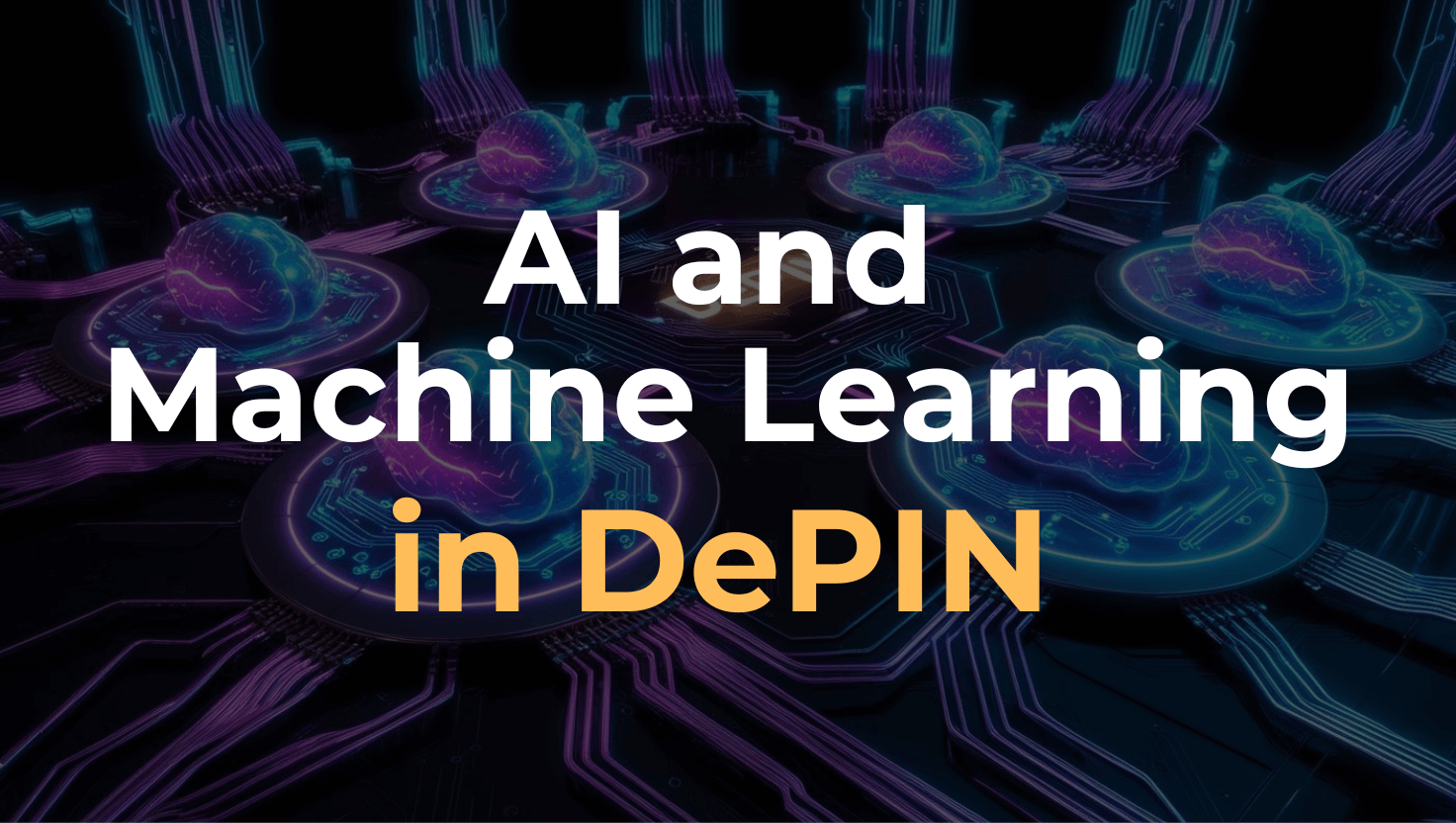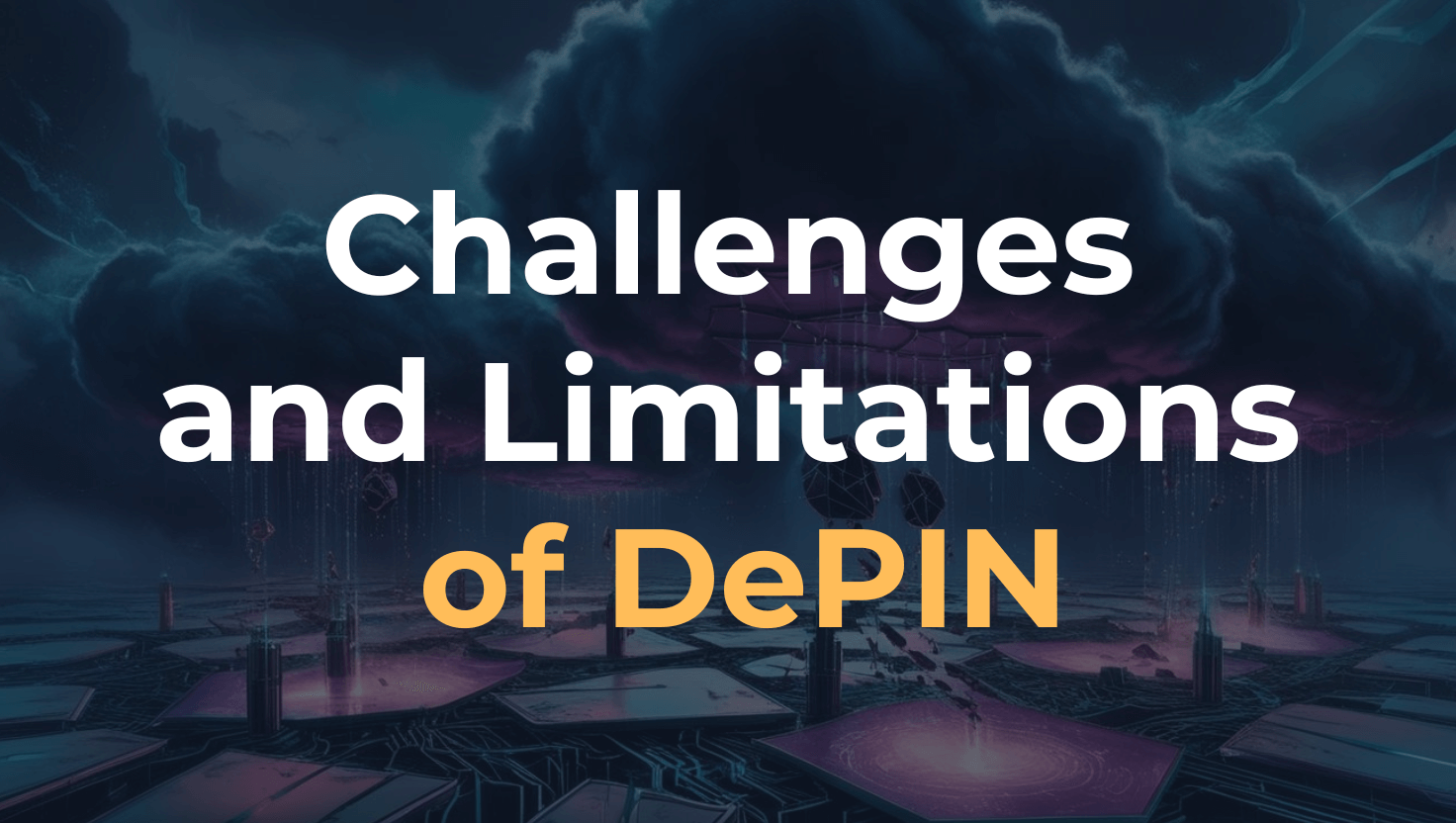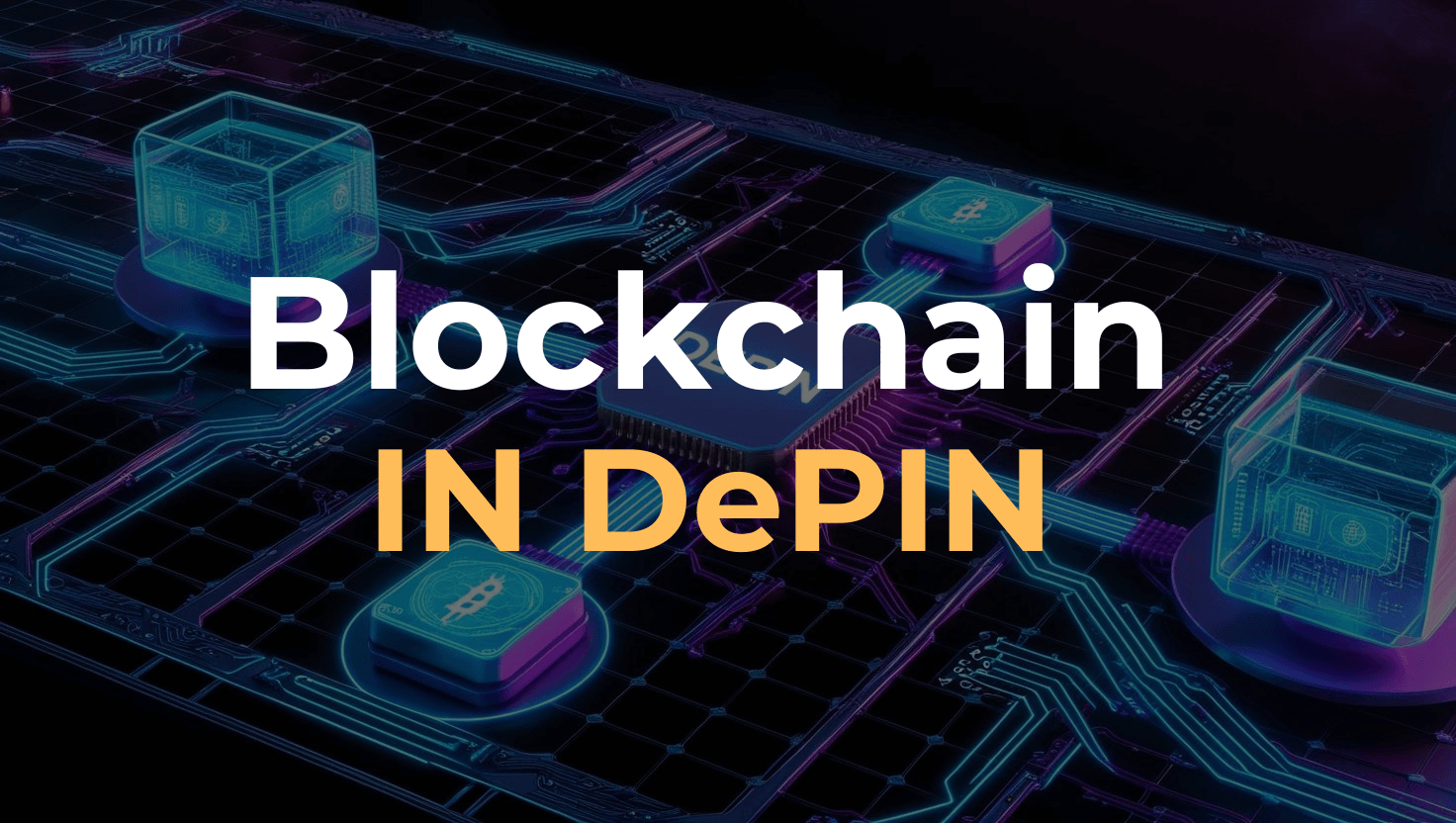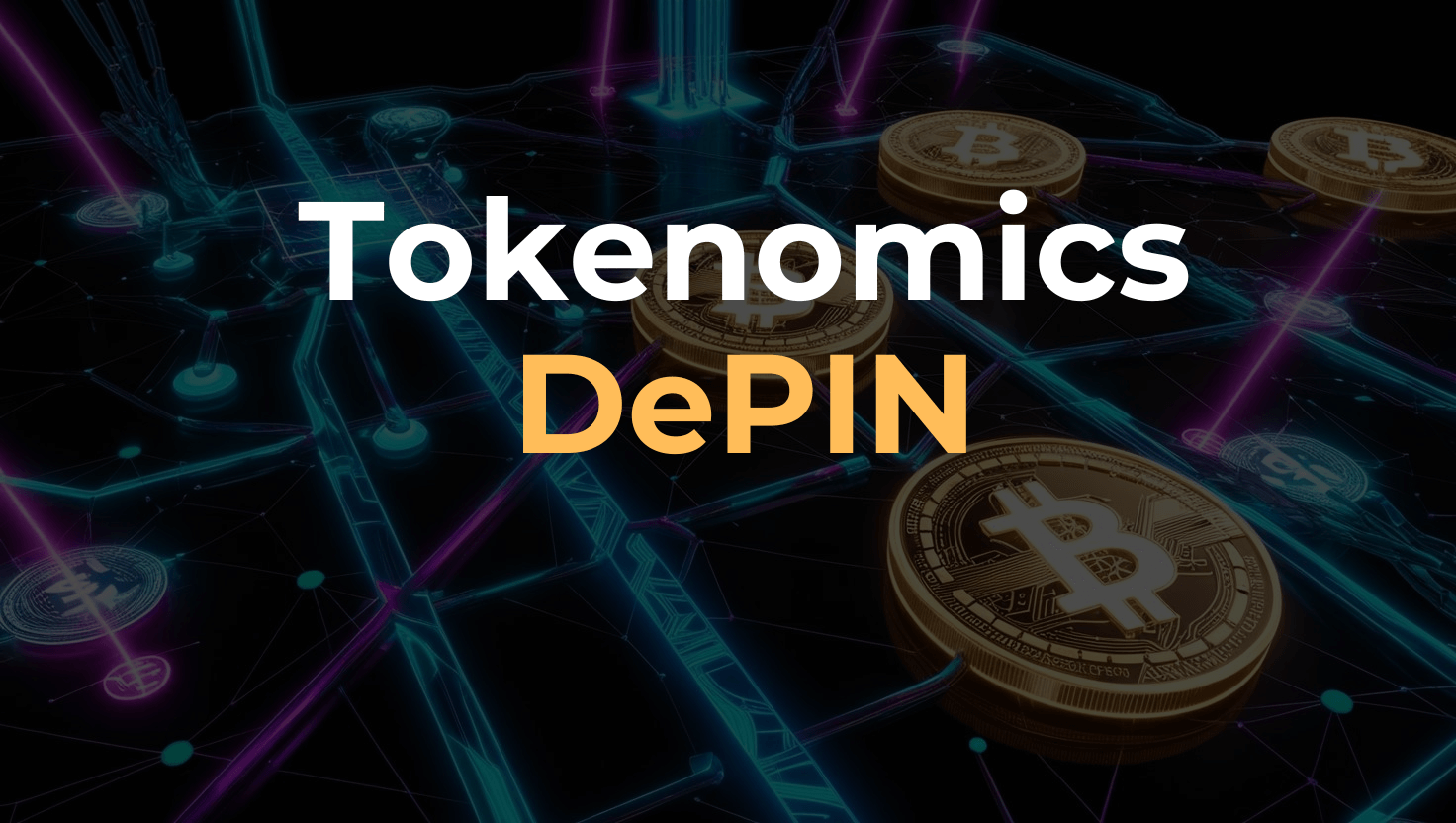Table of Contents
AI and Machine Learning in DePIN

Table of Contents
AI and Machine Learning in DePIN: Everything You Need To Know About AI in DePIN, Machine Learning For DePIN, and Blockchain AI Projects.
The integration of Artificial Intelligence (AI) with blockchain technology is transforming every industry around the world. One of the most interesting uses of this is in DePIN (Decentralized Physical Infrastructure Networks). DePIN uses blockchain to enable the creation of decentralized systems for physical infrastructure, and the application of AI and machine learning is advancing this innovation even further.
In this blog, we will analyze the importance of AI in DePIN, what is changing with the machine learning networks for DEPIN, and some of the amazing AI blockchain projects that are pioneering the industry. This guide is intended for anyone looking to begin or increase their knowledge on the topic, so we will provide clear and comprehensive information on this engaging subject.
What is DePIN?
Let’s first get a clear idea of what DePIN is before traversing into the significance of AI and machine learning. DePIN means Decentralized Physical Infrastructure Networks. These networks operate with blockchain technology to develop decentralized systems for a physical infrastructure like an energy grid, wireless networks, or even transportation systems.
As opposed to traditional infrastructure which is managed by central authorities, DePIN enables individuals and communities to actively take part in the construction, maintenance, and utilization of the networks. This decentralization by communities allows for greater inclusivity, transparency, and cost effectiveness.
The Role of AI in DePIN
AI is having an important impact on the development of DePIN networks. AI has the potential to transform these networks by making them smarter and more efficient. Let’s examine the difference AI in DEPIN makes.
1. Enhancing Network Efficiency
One of the most important uses of AI in DePIN is network operation processes optimization. AI algorithms are capable of processing the available information, detecting problems, and suggesting solutions in a matter of seconds.
For one, in a decentralized energy grid, AI can forecast the energy demand with respect to the past and modify the supply. This ensures that the network is constantly optimized, putting the system’s resources to the least amount of waste while also lowering expenses.
2. Predictive Maintenance
AI can also assist in making predictive maintenance for DePIN networks. AI is able to analyze data from sensors and other sources, and predict possible failures so that maintenance can be performed prior to the actual breakdown.
This is very important for systems such as decentralized wireless networks, where uptime is of utmost importance. Predictive maintenance will not only minimize the amount of downtime, but will also increase the life span of the hardware.
3. Fraud Detection and Security
Fraudulent activities, however, can still be conducted in the blockchain network. While there are general tweaks required, AIs can improve the overall security of the network by identifying any strange activities that might raise fraud concerns.
Let’s say in a DePIN networking setup under which the users are compensated with tokens for sharing some of their resources. AI can supervise these activities to make sure no abusive behavior is being conducted. This provides the network with a new level of protection and is able to enhance the integrity of the whole network.
Machine Learning for DePIN: A Revolution to Embrace
AI provides the overall framework but it is solely machine learning (ML) that powers a significant portion of its applications. As a subset of AI, machine learning entails the algorithmic training of computers to learn patterns from data for future predictions and decisions. Let’s see how machine learning for DePIN is changing the narrative of these networks.
1. Informed Choices
Data is the life force of machine learning algorithms. DePIN networks are a perfect example where a lot of data is being produced, which can be globally used for making informed decisions with the help of ML.
As an example, in a decentralized transportation network, ML can study traffic data in real-time and manage the flow of vehicles to avoid gridlocks. This improves efficiency of the system and user satisfaction at the same time.
2. Allocation of Resources
Machine learning proves to be useful in optimizing the allocation of resources in DePIN networks as well. In a document that outlines how users consume the system, ML algorithms can identify patterns and anticipate resource needs.
For example in a decentralized energy, ML can manage the flow of electricity by predicting periods of extensive utilization and stocking power resources. That ensures the order and operational efficiency of the network.
3. Personalization
There is a more fascinating use case for DePIN machine learning: personalization. ML algorithms can customize services for a user based on their activities.
As an example, in a decentralized wireless network, ML can identify a user’s data consumption patterns and suggest custom data plans. This enhances the experience of the user and also boosts engagement with the network.
Different Ai Blockchain Examples In Depin
In order to appreciate how AI and machine learning add value in the context of DePIN, it makes sense to observe other existing AI blockchain projects in this industry.
1. Helium Network
The Helium Network is a cryptocurrency that is applied to a decentralized wireless network that allows for the setting up of hotspots that provide wireless coverage. Although Helium does use blockchain technology as its core, its features are further enhanced with the AI and ML integrations.
For example, AI algorithms are already being developed and deployed to improve hotspot placement to cover as much area as possible. Some machine learning algorithms are also used for network analysis to evaluate its performance and provide optimization recommendations.
2. Power Ledger
Power Ledger enables users to buy and sell surplus energy through its stochastic energy trading system. The system is AI enhanced to predict energy usage which helps in optimal energy distribution.
Predictive analytics ensures the network is operating with optimal efficiency through machine learning. Doing so decreases the guesswork, eliminating additional cost to users.
3. IOTA
IOTA is a decentralized project serving the purpose of Internet of Things (IoT). The platform is using AI and machine learning to enhance its capabilities.
IOTA focuses on using machine learning to sift through information provided from IoT devices in order to improve their efficiency. This is particularly useful in applications like smart cities, where data needs to be optimized and managed properly.
Challenges and Opportunities in AI Driven DePIN
Among different challenges posed by the application of AI and Machine Learning in DePIN, there is a balance that needs to be stuck between the two sides. Let us analyze a few of these challenges and the loopholes they present.
Challenges
1. Data Privacy
Keeping data privacy under check is of utmost importance as AI, alongside machine learning, devours data in volumes. It poses a major challenge to provide AI processed insights while safeguarding the user’s data.
2. Complexity
Melding AI and machine learning with DePIN networks adds a form of sophistication to the latter. Making these technologies function properly with a blockchain system calls for some high level of skills.
3. Cost
Using AI and machine learning technologies does not come cheap. Smaller DePIN networks may have difficulties with the expenses that come with the implementation of these technologies.
Opportunities
1. Innovation
The application of AI and machine learning make novel advancements in DePIN networks more achievable. The possible uses from predictive maintenance and personalized services are just some of the many that could be triaged.
2. Efficiency
The application of AI and machine learning to DePIN networks can improve their efficiency dramatically leading to more affordable costs and greater outcomes.
3. Scalability
AI and machine learning can enhance the scaling of DePIN networks by optimizing resource distribution and enhancing the operational capabilities of a network.
The Prospects of Artificial Intelligence within DePIN
The uppermost layers of consideration for efficiency suggest that the union of AI and machine learning will provide an advantage and have a preeminent impact at the macro level of DePIN. Integration of AI and machine learning forecasting technologies already provides optimism for multi-faceted predictive analysis and advanced personalization.
It is also reasonable to presume that many networks will integrate more advanced technologies. After all, as the cost these integrations incur decreases, implementing them becomes easier. Furthermore, the synergy of AI with Blockchain technology is anticipated to generate new applications of use that we are not capable of imagining at the current moment.
Conclusion
The adoption of AI and machine learning technology within DePIN is changing our perceptions of decentralized physical infrastructure networks. These technologies are enabling a new wave of innovation by optimizing operations and increasing security.
There is a remarkable potential AI can achieve in DePIN in the coming years. It does not matter if you are a tech geek or someone who just wants to expand their horizon, everyone has the opportunity to immerse in this fascinating world.
Now, are you willing to step into the universe of AI-based DePIN? How do you think it would impact the future of decentralized infrastructure? The answer sits right in front of you. The world of possibilities is within reach, thanks to the integration of AI into blockchain.
Frequently Asked Questions Related to Artificial Intelligence and Machine Learning with DePIN
AI assists DePIN networks with optimizing processes, automatic resource control, advanced security, and enable predictive maintenance.
Machine Learning grants the ability to optimize the resources used and enables neuromarketing-decisioning and providing other services via servers in the networks.
To the best of our knowledge, yes. We can mention Helium Network, IOTA, and Power Ledger which are known to use AI and machine learning in their projects.
The challenges include maintaining data privacy, the increasing intricacy, and the expenses involved.






